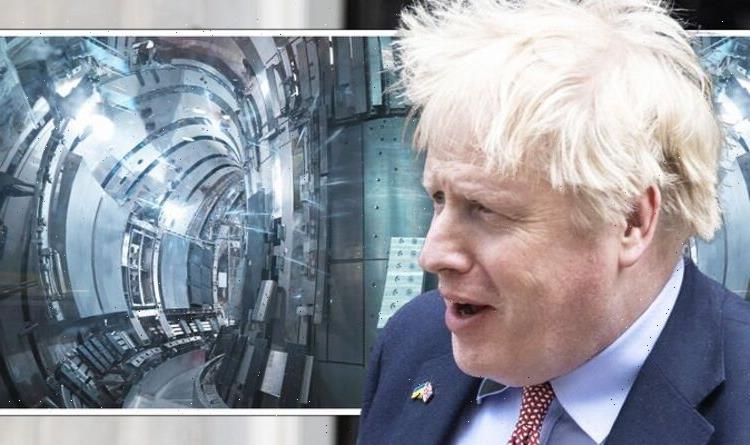Iter explain how the nuclear fusion project will begin its assembly
We use your sign-up to provide content in ways you’ve consented to and to improve our understanding of you. This may include adverts from us and 3rd parties based on our understanding. You can unsubscribe at any time. More info
The UK has been making serious headway in cracking the code to create the “holy grail” energy source. Fusion power can generate electricity by using heat from nuclear fusion reactions, the same process used by stars. But scientists are yet to solve the full mystery behind the process – getting the reaction to use up less energy than it produces.
But CEO of Pulsar Fusion, Richard Dinan, told Express.co.uk that the UK is ahead in the race to crack that code.
He told Express.co.uk: “We have got the most amazing scientists in the UK. We are sucking up talent and we will get there.
“Can we do fusion? Absolutely.
“England is the world talent pool for nuclear fusion scientists.
“Why do you think you have American billionaires like Jeff Bezos investing in British fusion projects like general fusion? It is because the brains are in England.


“England is the first country to regulate fusion in the world so if you want to create fusion, it is going to be in England.”
And it appears as though British companies are coming close.
This week, Oxford-based company First Light Fusion (FLF) achieved a stunning reaction using a unique method at its laboratory in Kidlington.
FLF’s technique compresses fuel inside a target using what is known as a projectile travelling at rapid speeds.
This managed to create a fusion reaction at a record rate of progress.
The company announced on Twitter: “We are delighted to announce that we have achieved fusion – a world-first with our unique new target technology.”

The achievement was hailed as a spectacular triumph by Science Minister George Freeman.
He tweeted: “Congratulations to First Light for a stunning achievement: the world’s first fusion validated by the UK Atomic Energy Authority.
Business & Energy Secretary Kwasi Kwarteng also hailed the achievement.
He said: “First Light Fusion’s British-born technology could potentially revolutionise power production in the coming decades.
“That is why this government is investing in UK science and innovation, ensuring that we remain at the forefront of the global scientific endeavour to make safe, clean, limitless fusion energy a reality.”
And that is not the only British company to have made a spectacular fusion breakthrough.
DON’T MISS
US reveals hypersonic missile test, risks escalating Russia tension [REVEAL]
UK poised for Swiss green tech deal after nuclear fusion breakthrough [REPORT]
‘Groundbreaking moment’ as UK to launch nuclear reactor in space [INSIGHT]

Scientists at the UK’s Joint European Torus (JET) laboratory broke their own record by smashing together two forms of hydrogen.
The experiments produced 59 megajoules of energy over five seconds – double what was previously achieved in 1997.
It was also hailed as a major breakthrough in the quest to develop nuclear fusion.
Mr Dinan’s company also announced that it is planning to launch its nuclear fusion reactors into space by 2027.
Pulsar is also seeking to harness the process of nuclear fusion in space with its nuclear fusion reactors to power its rockets for travel to planets beyond our solar system.
While the process down on Earth could be “the answer to the energy crisis”, up in space, it is easier to create as the process occurs naturally there.

But Mr Dinan sees nuclear fusion cores as having two purposes, one for clean energy the other for rapid space travel.
And while the Government has been focusing on nuclear energy, with the power source featuring as a key part of its new energy strategy, nuclear fusion is different.
Traditional nuclear power stations use a process called nuclear fission, as opposed to fusion.
But nuclear fusion can produce up to four times more energy, and doesn’t need radioactive materials like uranium and plutonium.
This also avoids a Fukushima-type nuclear accident from happening, as plasma cools within seconds causing the reaction stops if any disturbance occurs.
Source: Read Full Article
